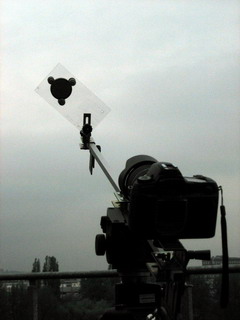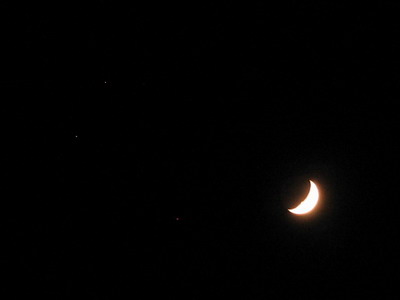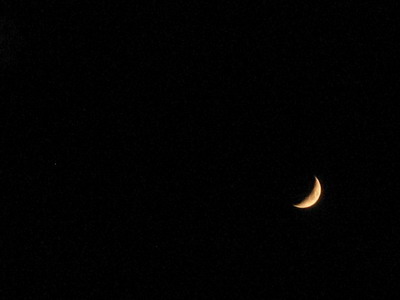
Diese Seite auf deutsch 
The Moon's Parallax
Tests in photographing the moon on May 3rd and preparation
Aims of this preparation day are
- to start the hot phase of this project,
- to test the own equipment and to find suitable exposure times,
- to test our central data page and the submission of data to it and
- finally, to start naked eye observations of the moon during the four weeks until project date May 31rst.
On this day, it is more important to find suitable parameters of photographing than to visualize the moon's parallax. Therefore, every participant may take his/her pictures at arbitrary times. However, pictures taken aroung the final project times will enlarge the chance of finding photos which have been taken nearly simultaneously.
The date May 3rd is especially suitable for tests of photographing because the moon's position between Saturn and Regulus is very similar to that of our project day. Therefore, the experiences made on May 3rd can be one to one transmitted to May 31rst (similar weather assumed).
Test procedure
For the test photos we propose the following procedure:
- Find the suitable focal length ("zoom"). Usually the largest magnification may be chosen.
- Because of quite long exposure times ist is essential to fix the camera carefully (by a tripod, for instance). In order to avoid any camera shake, we additionally propose to use the timer function of the camera so that you don't need to touch the camera while exposuring.
- Use the automatic modus of the camera, once without flash, once with flash. (Using flash will, of course, shorten the exposure time. Perhaps this will be a possibility not to overexpose the moon.
- Saturn and Regulus must be visible on the pictures.
- If possible, change from automatic to manual modus and vary the exposure time in steps from "-2" to "+2".
- If there is a too large difference between the moon's and Regulus' brightness it may possible to darken the moon's picture with a filter. Dr. Wallasch (Bonn) gathered first experiences with this refinement.

Equipment for darkening only the moon (Wallasch, Bonn)
- Choose the best pictures and keep their parameters in mind. It's advisable to fix the parameters in a log.
 |
 |
| Manual exposure "-2" | Manual exposure "-2" with flash
(two stars disappeared) |
Exchange of experiences
- Try to measure the positions of moon, Saturn and Regulus. One possibility is to use the little program evalmoonpicts. This program will be optimized during the following weeks.
- Submit one photo and (if possible) the corrosponding positions to our central data page. Additional pictures may be sent per mail to the email address below.
- If you make experiences which could be worth for participants describe them in a mail to the same address. They will be published per mail or in a little web page.
Observation of the moon's motion
Please, use the remaining weeks to cause your partners (pupils, students, amateurs, ...) observe the moon and the several aspects of its motion consciously:
- At which times is the moon visible? When does it rise, when set?
- At which time does the moon culminate? Does this maximum altitude vary during the month?
- How fast do the phases of the moon vary? Is there any correlation between phases and visibility of the moon?
- Cause your partners to be aware of the moon's synodic motion (with respect to the sun) and of his sideral motion (with respect to the stars).


 Udo Backhaus
Udo Backhaus

last change: last update: 2020-03-03







 Udo Backhaus
Udo Backhaus
